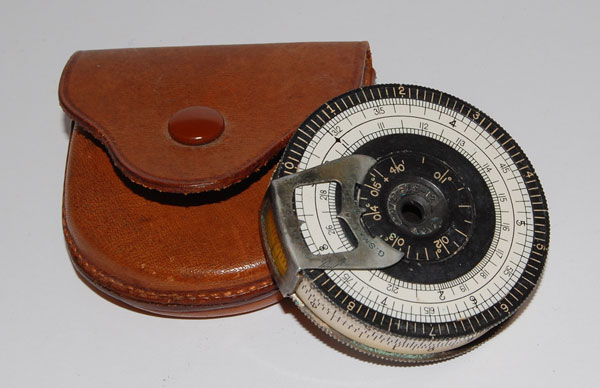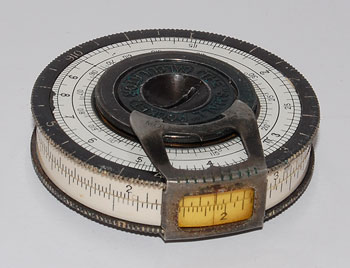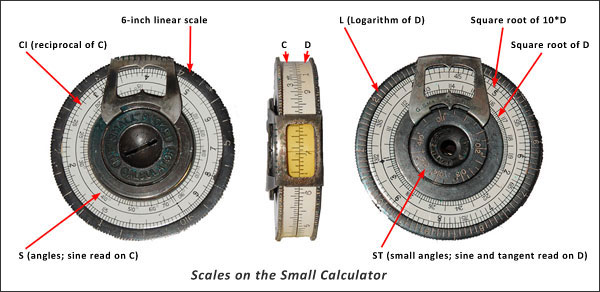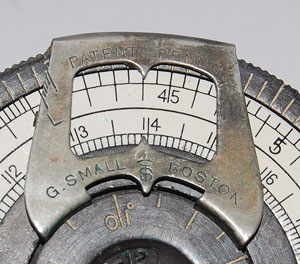 |
|
|
|

|

|
The small Small Calculator |
|
|
|
|
The reason The Small Calculator is called The
Small Calculator isnít that it is a small calculator; the reason The
Small Calculator is called The Small Calculator is that it was
invented by Mr. Gilbert Small of Waltham, Massachusetts. That said (hey, I just had to say it!), one must admit that Mr. Smallís invention is really quite small for a full fledged slide rule, being about 5 cm in diameter and 1 cm thick. It is also original in construction and lovely in form. Hats off to Mr. Small! |
|
|
|
 Click photo to enlarge |
|
|
|
Unlike the more common type of circular slide
rule, the Small calculator places its primary pair of logarithmic
scales -- the C and D scales used to multiply and divide -- not on its
face but around its edge, one scale on each of two stacked discs --
flattened cylinders -- that are connected at their centers to rotate
relative to each other. It also has a uniquely shaped cursor that
points at these scales and at those on the flat faces of the discs. The general form factor of two stacked discs is not original to Small, and is seen in an earlier patent from 1900 issued to one Roger W. Conant. |
 Click photo to enlarge |
|
|
|
What makes Smallís design unique, as he stresses in the patent application he'd filed on Feb. 17, 1913, is the convenience with which the device can be held when in use. |
|
|
|
This calculator packs all the functionality of a basic pocket slide rule. It can multiply and divide, and do square roots, reciprocals, sines and logarithms. It has the scale length -- hence the precision -- of a 15 cm straight slide rule, but fits in a beautiful leather case a mere 6 x 6 x 1.5 cm in size. You can identify the different scales in the image below. |
|
|
|
 Click photo to enlarge |
|
|
|
There are two unusual aspects to this arrangement. One is the set of interpolating index lines marked "L" that the cursor dedicates to the Log scale, which let you read this scale at the side of the cursor rather than in the middle. The other is the linear six-inch scale around the circumference of the back side. The only function I could think of for this is to serve as a ruler -- many slipsticks have measuring rulers on their straight edge. Since this slide rule has no straight edge, Mr. Small may have decided to design it with an exact circumference of six inches, so you can measure distances by rolling it on the surface being measured. If you can think of another use for this scale, let me know! |
|
|
|
Exhibit provenance: I bought this item in one of the Oughtred Societyís wonderful meetings. More info: |
|
|
|
|
|
|
|
Home | HOC | Fractals | Miscellany | About | Contact Copyright © 2013 N. Zeldes. All rights reserved. |
|
